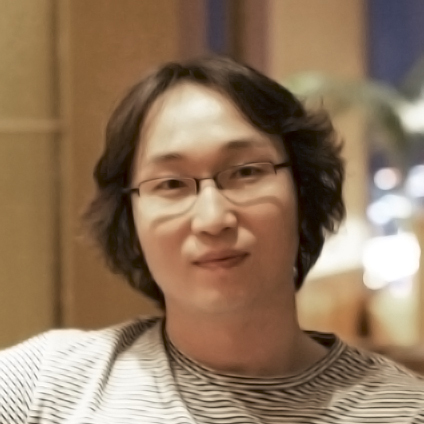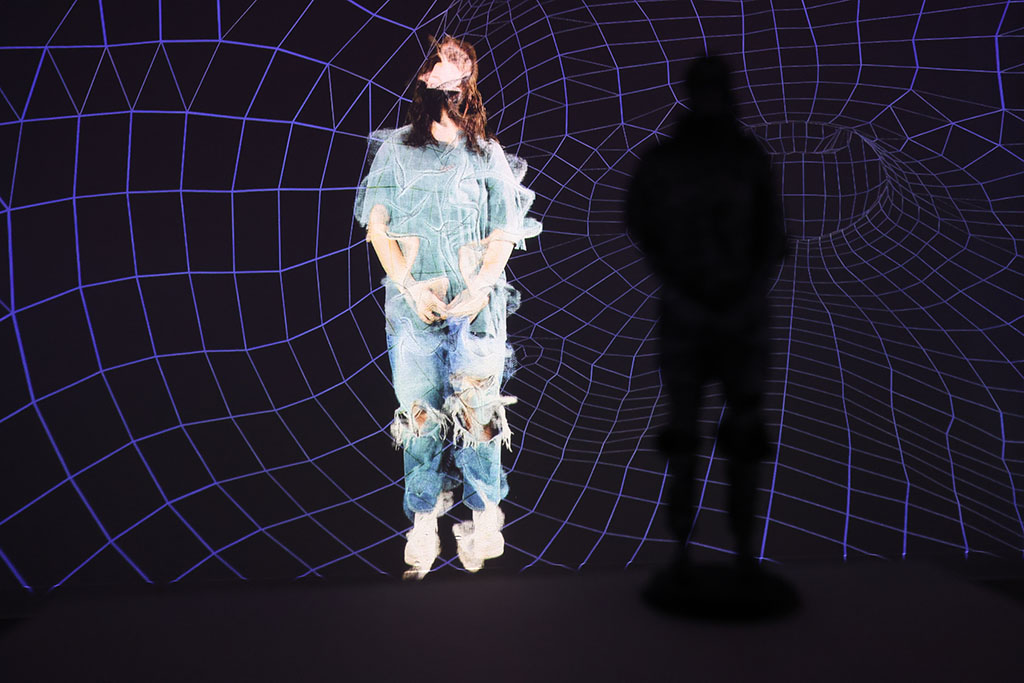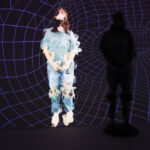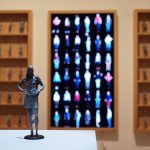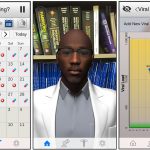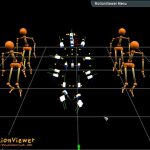Nov 2022
White Box Gallery @ Connecticut College
By James Lee, Andrea Baldwin, and Heidi Henderson
The Reminiscence – The Monologues of Being Seen is the third-generation interactive media installation/performance based on the posture portraits project (PPP). PPP is an interdisciplinary project which examines how bodies have historically been created/made through scientific interventions and surveillance while simultaneously engaging with the concept of inclusivity of all bodies including those traditionally seen as “Other.” To do so, we trace the development of healthism – the reinforcement of certain norms that construct the “healthy” as moral and pure and the “unhealthy” as foreign and polluted – in the modern American university which dates back to the early 17th century, and its relationship to the U.S. eugenics movement in the late 19th to 20th century. We explore how these ideologies were mobilized in the service of creating new disciplining and surveillance technologies in higher education by examining the case of what is known as “the posture portraits.” These portraits, taken at colleges and universities across the nation during the 1920s-1960s, were used as a measurement of ability and good posture, which at that time, was linked to intelligence, beauty, and what it meant to be “normal.”
Through selected case studies of colleges that engaged in posture photography and with the use of archival and interview data from women who had posture portraits taken in the 1950s and 60s, this project looks at how the posture portrait project was undertaken, the responses to the practice, and how we can use technology and the arts to critique this and other discriminatory historical practices with the goal of mining linkages, current resonances, and work toward a more just society.
Our first attempt, The Reminiscence – A Story at Connecticut College, was to invite the current generation of students, share the story, and ask them to try this practice in their way. We captured photos and 3D data and created our first interactive installation in 2018. Then, we made the second generation that aimed to create an immersive and participatory performance in 2021. The latter performance included dancers on-site, and they shared their personal experiences of being seen. At each performance, we also collected data from participants. Finally, our third generation was designed to be a standalone exhibit similar to the first one to present all our previous work as a whole including new generations’ reflections and monologues of being seen. Overall, we had more than two hundred participants and collected their data. In the third iteration, we included about 100 data sets and sculptures. A visitor can look around 1/10 scale individual sculptures and retrieve individual data set and visual audio experience by placing a sculpture on the center platform where the RIFD reader can detect the id of each sculpture and send it to a main computer handling visualization and audio rendition.
The Installation Video
Published Journal Article
Baldwin, N. A., Henderson, H., Lee, S. (2020). (Re)creating the posture portraits: Artistic and technological (re)productions of the gendered (re)presentations of bodies at institutions of higher education, Body Studies Journal. 2(8). http://bodystudiesjournal.org/postureportraits/
Acknowledgment
This work is a part of the (Re)creating the Posture Portraits research project. A Faculty Research Grant funds it from the Ammerman Center for Arts and Technology, the Jean C. Tempel ’65 Computer Science Assistant Professorship, the Summer Science Research Institute program, and a Research Matters grant by the Office of the Dean of Faculty at Connecticut College. We appreciate the Ammerman Center’s generous support for this project. We also thank the participants who volunteered for the “Re-Production” of the posture photographing event (2017) and performance (2021) where we collected photographs and 3D data.
Credits for student researchers and artists:
Lien Har ’23, Muhammad Bazeed Shahzad ’24, Tyler Silbey ’22, and Vanny Phai ’25
